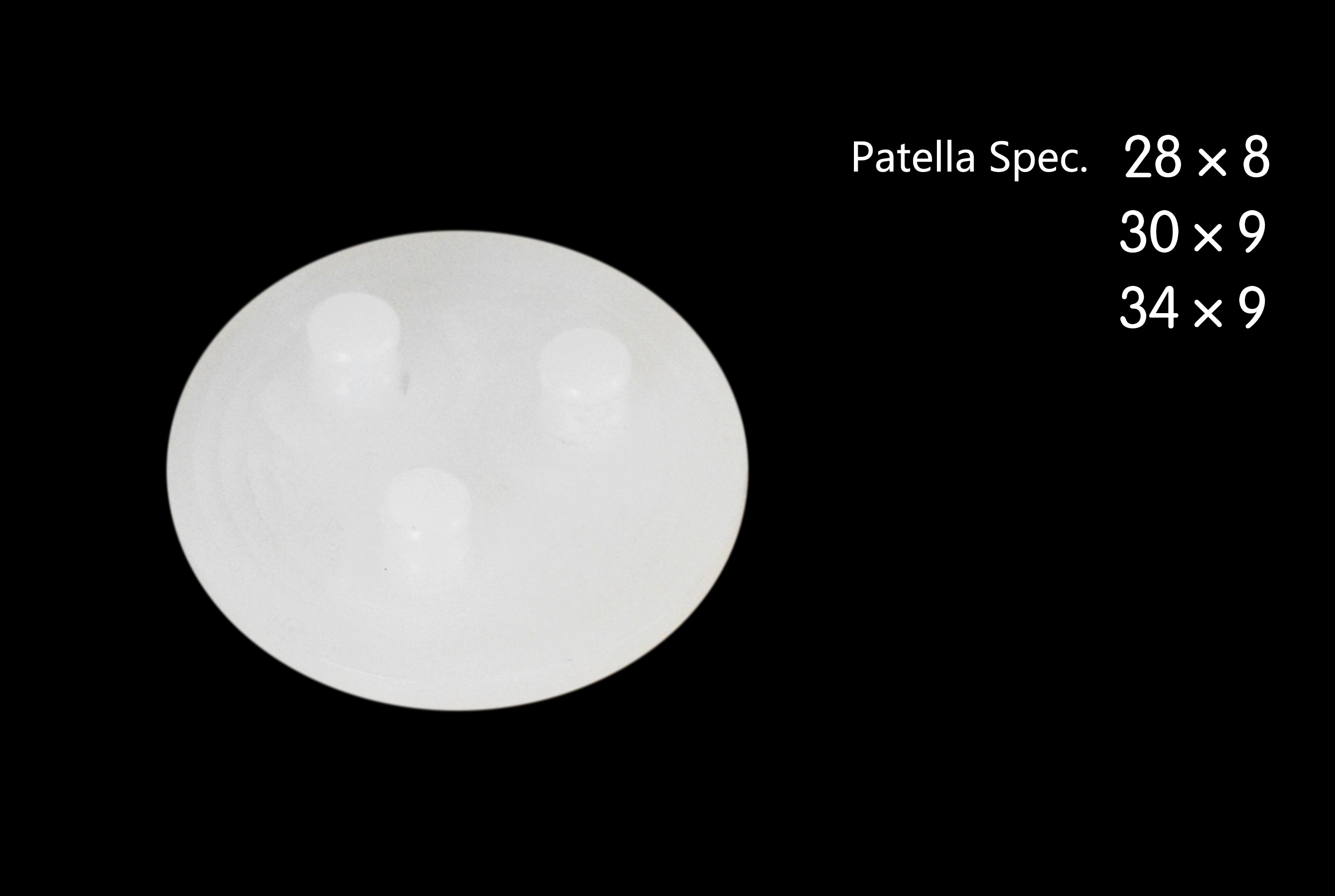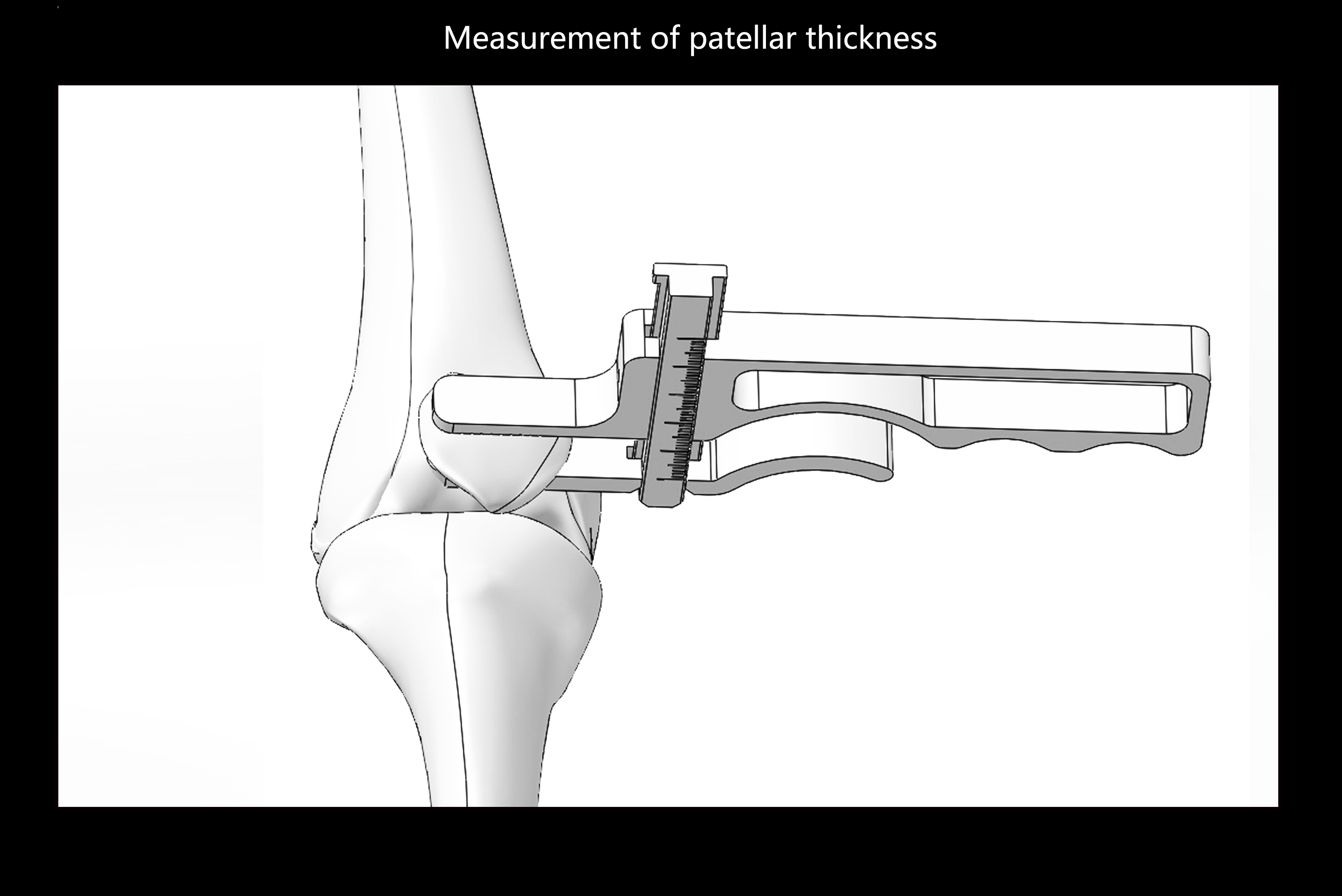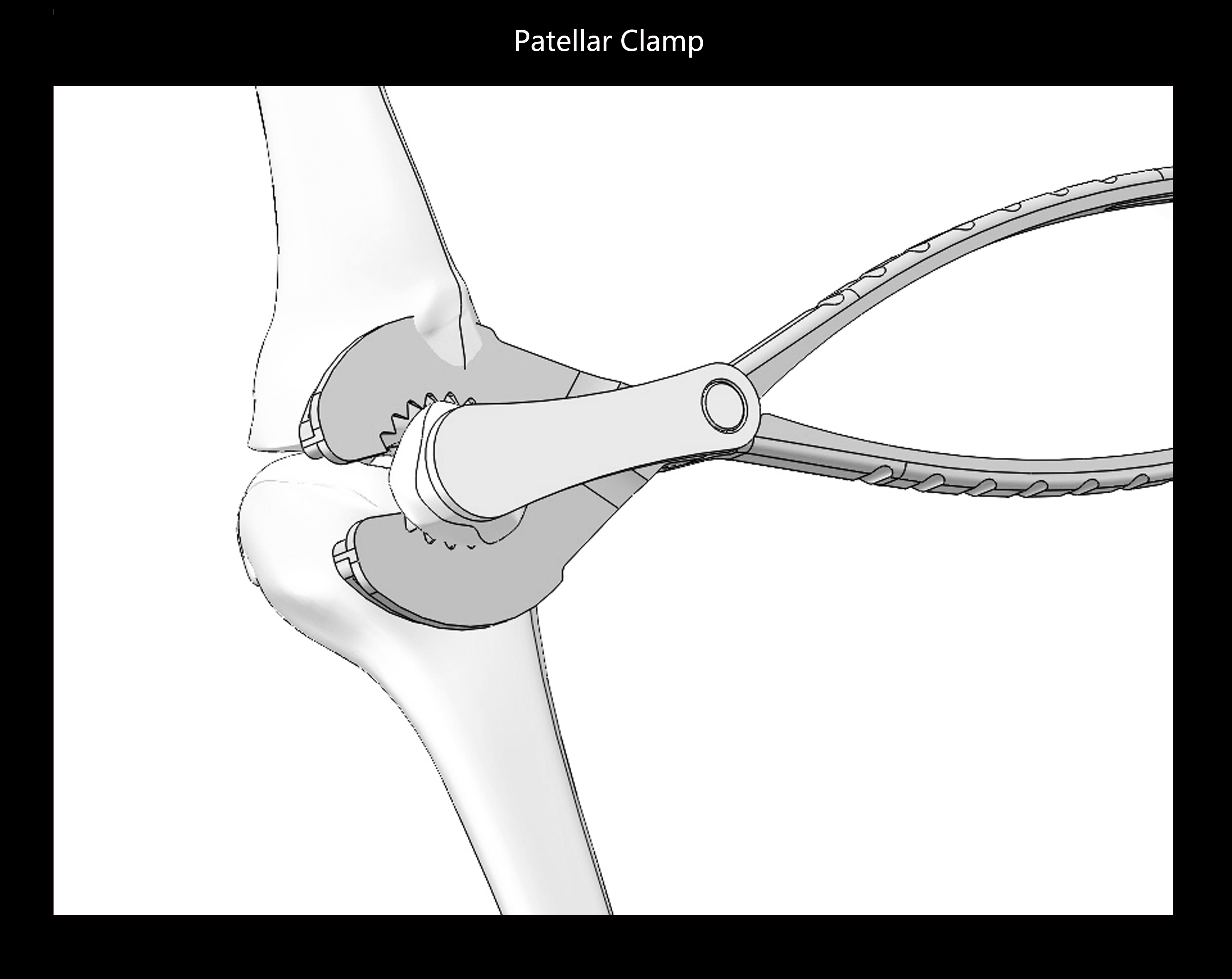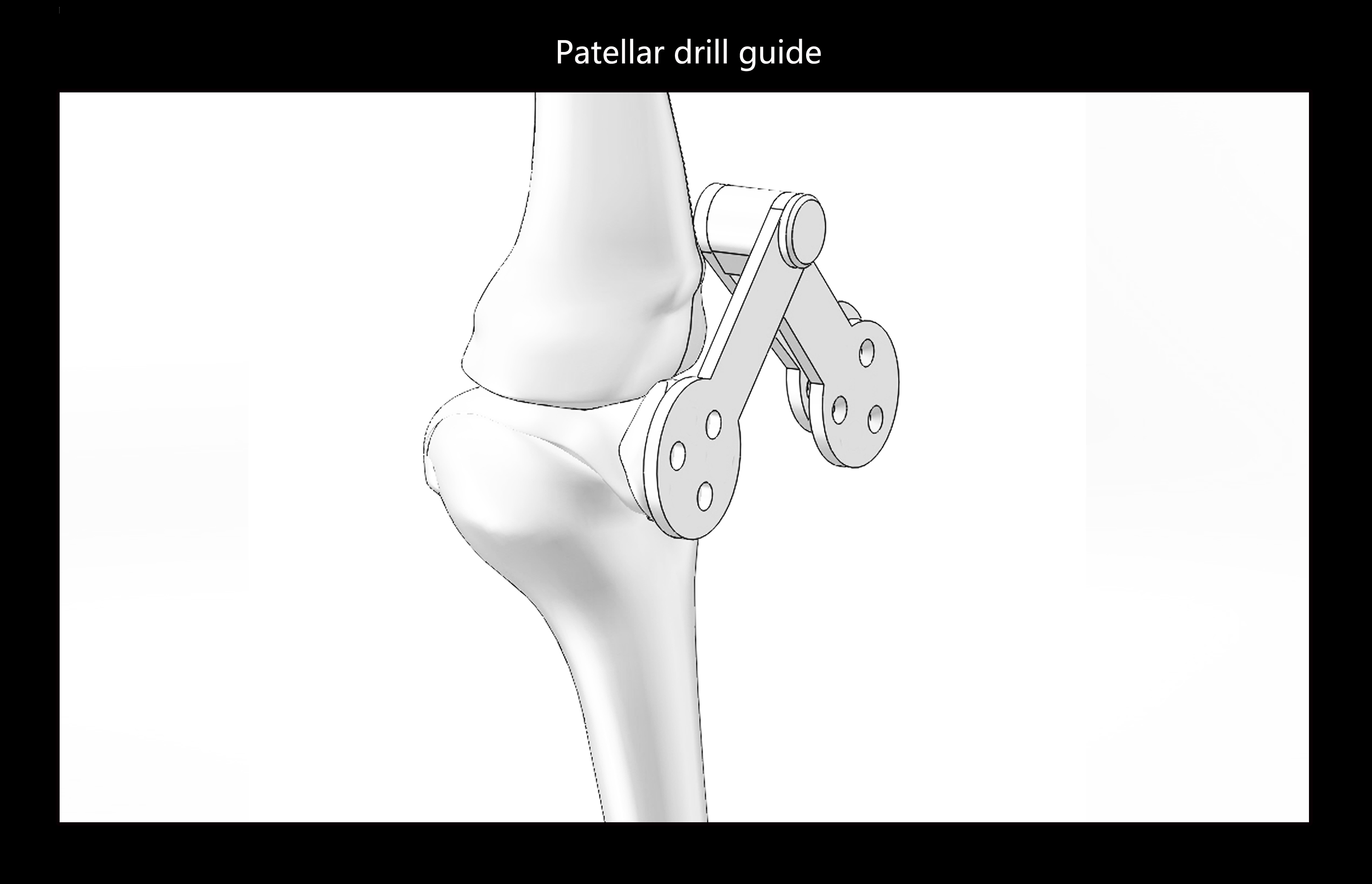Patellar preparation
 Jan. 13, 2020
Jan. 13, 2020
Patellar preparation
Any remaining synovial tissue underneath the quadriceps tendon should be removed to avoid crepitation secondary to soft tissue compression after CR (PCL retaining) keen arthroplasty, or patellar clunk syndrome occurred after PS (PCL sacrificing) knee arthroplasty (Fig.1).
The thickness of patella in females is usually 22-24 mm, and that in males 24-26 mm. The patellar cutting guide (Fig. 2) is used to make sure the thickness resected is same as that replaced.
Patellar osteotomy is recommended to perform from medial to lateral. All remaining cartilage at lateral patella must be removed. The residual thickness of the patella can be determined by measuring the medial side. The patellar prosthesis should not exceed the bone surface in both of superior-inferior and medial-lateral directions. If a smaller patella is selected, the patellar prosthesis should be placed medially to optimize the patellar tracking (Fig. 3). The uncovered lateral bone is then removed obliquely to prevent possible impingement on the prosthetic trochlea (Fig. 4). After osteotomy, the trail patellar is installed, then the thickness of the whole patella is measured to avoid overfilling the patellofemoral compartment due to the excessive thickness of the prosthesis.
JUST Provide professional, complete patellar replacement products and instruments.

















